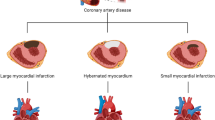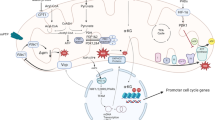Abstract
Background: During myocardial ischemia, accumulation of end products from anaerobic glycolysis (hydrogen ions (H+), lactate) can cause cellular injury, consequently affecting organ function. The cells' ability to buffer H+ (buffering capacity (BC)) plays an important role in ischemic tolerance. Age related differences in myocardial lactate and H+ accumulation (one hour of ischemia) as well as differences in BC, myoglobin (Mb) and histidine (His) contents in the left (LV) and right (RV) ventricles were assessed in neonatal compared to adult pigs. The BC of the septum was also compared. Methods and Results: Neonatal RV and LV had lactate accumulations of 43% and 63% and significantly greater H+ (p < 0.004) compared to the adult. In the neonate LV, BC was 17% significantly poorer (p = 0.0001), had 33% lower Mb (p = 0.0002) and 15% lower His content (p = 0.0004) when compared to the adult. In the RV, despite similar BC between the neonate and adult, myoglobin content was 36% (p = 0.0004) lower in the neonate. The neonate septum had a BC that was 11% lower than that of the adult. With maturation, the adult LV had a BC that was 10% greater (p < 0.01) than the RV while the septum mirrored that of the LV. Conclusions: During maturation to adulthood, the BC of the septum begins to closely resemble the LV. Neonatal hearts have a potentially greater vulnerability to acid-base disturbances during ischemia in both ventricles when compared to hearts of adults. This is due to lower levels of myoglobin and histidine in the young, which could render them more susceptible to injury during ischemia.
Condensed Abstract
During myocardial ischemia, H+ and lactate accumulation may pose deleterious effects on the heart. The ability to buffer H+ (buffering capacity, BC) affects ischemic tolerance. Although lactate accumulation during 1 h of global ischemia was similar between ventricles of neonatal and adult swine, H+ accumulation was greater and BC, Mb and His content were lower. With maturation, LV BC was higher than the RV while septum developmentally resembled the LV. Thus, hearts of neonates may be at a greater risk of ischemic injury compared to hearts of adults. (Mol Cell Biochem xxx: 1–7, 2005)
Similar content being viewed by others
References
Allard MF, Lopaschuk GD: Myocardial Ischemia: Mechanisms, Reperfusion, Protection. Birkhsuser Verlag Basel Switzerland, 1996
Vaughan-Jones RD: Regulation of intracellular pH in cardiac muscle. Ciba Foundation Symposium 139: 23–46, 1988
Dennis SC, Gevers W, Opie LH: Protons in ischemia: where do they come from; where do they go to? J Mol Cell Cardiol 23: 1077–1086, 1991
Abelow B: Understanding acid-base. Baltimore, MD: Williams and Wilkins, 1998
Lowenstein J: Acid and Basics: a guide to understanding acid-base disorders. Oxford University Press, 1993
Glauser E: Advantages of piglets as experimental animals in paediatric research. Exp Med Surg 24: 181–190, 1966
Belanger MP, Torrance SM, Panos A, Wittnich C: Multiple in vivo full-thickness myocardial biopsies by freeze-clamping. J Invest Surg 5(2): 143–147, 1992
Schön R: A simple and sensitive enzymatic method for the determination of L+) lactic acid. Annal Biochem 12: 413–420, 1965
O'Brien PJ, O'Grady M, McCutcheon LJ, Shen H, Nowack L, HorneRD, Mirsalimi SM, Julian RJ, Grima EA, Moe GW: Myocardial myoglobin deficiency in various animal models of congestive heart failure. J Mol Cell Cardiol 24: 723–732, 1992
Van Slyke DD: On the measurement of buffer values and on the relationship of the buffer and the concentration and reaction of the buffer solution. J Biol Chem 52: 525–570, 1922
Bates RG: Determination of pH, theory and practice. New York, NY: Wiley-Interscience, 1973
Vasuvattakul S, Warner LC, Halperin ML: Quantitative role of the intracellular bicarbonate buffer system in response to an acute acid load. Am J Physiol:Regulatory, Integrative Comp Physiol 262: R305–309, 1992
Spackman DH, Stein WH, Moore S: Automatic recording apparatus for use in the chromatography of amino acids. Anal Chem 30(7): 1190–1206, 1958
Petrich ER, Schanne OF, Ponce Zumino A: Myocardial Ischemia: Mechanisms, Reperfusion, Protection. Birkhauser Verlag Basel. Switzerland. 1996
Portner HO, Boutiler RG, Tang Y, Toews DP: Determination of intracellular pH and pCO2 after metabolic inhibition by fluoride and nitrolotriacetic acid. Resp Physiol 81: 255–274, 1990
Corbett RJ, Laptook AR, Garcia D, Ruley JI: Cerebral acid buffering capacity at different ages measured in vivo by 31PNMR and 1H nuclear magnetic resonance spectroscopy. J Neurochem 59(1): 156–169, 1992
Riva E, Hearse DJ: The developing myocardium. Futura Publishing Company Inc. New York, NY, 1991
Relman AS: Metabolic consequences of acid-base disorders. Kidney International. 1: 347–359, 1972
Mhaskar Y, Dunaway GA: The subunit proportions and kinetic properties of 6-phosphofructo-1-kinase isozymes from rat heart atria and ventricle progressively change during aging. Mol Cell Biochem 107(1): 39–45, 1991
Wittnich C: Age-Related Differences In Myocardial Metabolism Affects Response To Ischemia. Am. J Cardiovasc. Path 4(2): 175–180, 1992
Chiu RCJ, Bindon W: Why are newborn hearts vulnerable to global ischemia? The lactate hypothesis. Circulation 76: 146–149, 1987
Wittnich C, Peniston C, Ianuzzo D, Abel JG, Salerno TA: Relative vulnerability of neonatal and adult hearts to ischemic injury. Circulation 76: 156–160, 1987
Wittnich C, Bandali, K, Belanger MP: Differences in carbohydrate metabolism during global ischemia in neonatal vs. adult hearts. Can J Cardiol (revision)
Kida M, Fujiwara H, Ishida M, Kawai C, Ohura M, Miura I, Yabuuchi Y: Ischemic preconditioning preserves creatine phosphate and intracellular pH. Circulation 84: 2495–2503, 1991
Pierce GN, Philipson KD: Na+/H+ exchange in cardiac sarcolemmal vesicles. Biochim Biophys Acta 818: 109–116, 1985
Griffiths RI, Baldwin J, Berger PJ: Metabolic development of the sheep diaphragm during fetal and newborn life. Resp Physiol 95(3): 337–347, 1994
Ganong WF: Review of Medical Physiology 18th ed. Stamford, Connecticut: Appleton & Lange, 1997
Harris RC, Marlin DJ, Dunnett M, Snow DH, Hultman E: Muscle buffering capacity and dipeptide content in the thoroughbred horse, greyhound dog and man. Comp Biochem & Physiol A-Comp Physiol 97(2): 249–251, 1990
Millikan GA: Muscle hemoglobin. Physiol Rev 19: 503–523, 1939
Doeller JE, Wittenberg BA: Myoglobin function and energy metabolism of isolated cardiac myocytes: effects of sodium nitrite. Am J Physiol:Heart Circ Physiol 261: H53–H62, 1991
Gupta RK, Wittenberg BA: 31P-NMR studies of isolated adult heart cells: effect of myoglobin inactivation. Am J Physiol: Heart Circ Physiol 261: H1155–H1163, 1991
Bailey JR, Driedzic WR: Function of myoglobin in oxygen consumption by isolated perfused fish hearts. Am J Physiol:Regulatory, Integrative Comp Physiol 251: R1144–R1150, 1986
Braunlin EA, Wahler GM, Swayze CR, Lucas RV, Fox IJ: Myoglobin facilitated oxygen diffusion maintains mechanical function of mammalian cardiac muscle. Cardiovasc Res 20: 627–636, 1986
Lin L, Svlven C, Sotonyi P, Somogyi E, Kaijser L, Jansson E: Myoglobin content and citrate synthase activity in different parts of the normal human heart. J Appl Physiol 69(3): 899–901, 1990
Portman MA, Eyster GE: Myocardial buffering capacity and high-energy phosphate utilization during hypothermic circulatory arrest and recovery in the newborn lamb in vivo. J Thorac Cardiovasc Surg 108: 946–952, 1994
Iannettoni MD, Bove EL, Fox MH, Groh MA: The effect of intramyocardial pH on functional recovery in neonatal hearts receiving St.Thomas' Hospital cardioplegia solution during global ischemia. J Thorac Cardiovasc Surg 104(2): 333–343, 1992
McGowan FX Jr, Cao-Danh H, Tadeuchi K, Davis PJ, Del Nido PJ: Prolonged neonatal myocardial preservation with a highly buffered low-calcium solution. J Thoracic & Cardiovasc Surg 108(4): 772–779, 1994
Takeuchi K, Maida K, Yoshida S, Suzuki S, Del Nido PJ, Tanaka S: A clinical application of histidine buffered cardioplegia. J Jpn Assoc Thorac Surg 45(10): 1715–1719, 1995
Author information
Authors and Affiliations
Corresponding author
Rights and permissions
About this article
Cite this article
Wittnich, C., Su, J., Boscarino, C. et al. Age-related differences in myocardial hydrogen ion buffering during ischemia. Mol Cell Biochem 285, 61–67 (2006). https://doi.org/10.1007/s11010-005-9055-9
Received:
Accepted:
Published:
Issue Date:
DOI: https://doi.org/10.1007/s11010-005-9055-9




